
Change can come quickly in business. The small player of today may forge an empire tomorrow, while seemingly unstoppable giants may prove shorter-lived than expected.
This can be especially true for eCommerce, where staying ahead of trends and technology is crucial for survival. Anyone who cannot adapt fast enough risks going extinct.
This means that for every eCommerce platform that continues to thrive, there are many platforms that already reached their "End of Life". A wise entrepreneur can avert this fate by learning the reasons for these platforms’ termination and avoiding their mistakes.
Here is some information on a variety of discontinued eCommerce platforms and the reasons why they failed.
Why Do eCommerce Platforms Get Discontinued?
A platform can fail for any number of reasons. If those reasons overwhelm its ability to adequately handle the needs of its customers, the company will terminate it. Some reasons include:
The Platform Becomes Outmoded
To stay competitive, software companies constantly create and release new products and services. Each is designed to serve their own purpose and fill a specific need.
Sometimes, these new products perform similar functions as older ones. They distinguish themselves by doing them better, performing additional functions, and utilizing more advanced technology.
At that point, and through no fault of their own, those older platforms just seem redundant and inferior. The company can thus easily discontinue them, so it does not have to compete with itself.
A Lack of Updates
Anyone whose work involves computer technology needs to stay current. Between new operating systems and browser updates and innovations in computing practices, constant development is required.
Software companies that provide service for multiple products and platforms may choose to focus their resources on some more than others. However, this comes at the risk of upsetting customers, who may find that certain features are not working.
If an ecommerce platform goes on without significant updates for too long, the company behind it may decide that fixing every issue may not be worth the cost or effort.
A Refusal to Expand and Explore
A platform can become a household name just by being able to perform a certain useful function better than any other. This success may cause developers to believe that no more work is necessary. This would be unwise, as the next challenger may bring something new, and the older one may not be able to compete.
Reaching the top requires long, hard labor, and so does staying on top. This may entail optimizing the platform’s current features, or adding new ones. It may even entail branching out and utilizing the platform in a way that goes beyond its intended use.
Of course, some of these experiments might be dead ends. However, flexibility can enhance a platform’s usefulness, competitiveness, and longevity. Truly enterprising developers can benefit from thinking long-term.
List of Discontinued eCommerce Platforms
Seeing specific examples of a discontinued platform can illustrate the challenges that an eCommerce company may face. Some of these services were poorly conceived, others became outmoded too quickly, and others still could not weather certain shifts and maintain their success.
Here are a few such stories:
-
Magento Go
Magento created this platform specifically for smaller businesses. Magento Go allowed merchants to skip the technical details and create simplistic online stores.
 eBay, which owned Magento at the time, ended the program in 2015. This was partly because the then-upcoming Magento 2 would have its own services for smaller e-retailers, but also partly because they wanted to focus on larger ones.
eBay, which owned Magento at the time, ended the program in 2015. This was partly because the then-upcoming Magento 2 would have its own services for smaller e-retailers, but also partly because they wanted to focus on larger ones. -
ProStores
Not long after the acquisition, eBay gave it the same fate as Magento Go. Both platforms ceased operation on the same day in 2015, depriving small businesses of both options. Another acquisition of eBay, ProStores similarly focused on small businesses. The platform gave them more flexibility in selling their products.
Another acquisition of eBay, ProStores similarly focused on small businesses. The platform gave them more flexibility in selling their products. -
Adobe Business Catalyst
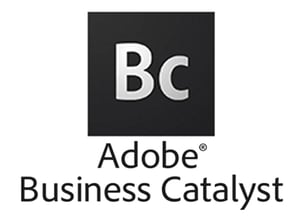 This SaaS platform was designed for “building and managing business websites.” However, the service severely limits users in what they can do, and other platforms that emerged after its launch have not just more features, but better features. It does not help that Adobe has not released a significant update for the software in years.
This SaaS platform was designed for “building and managing business websites.” However, the service severely limits users in what they can do, and other platforms that emerged after its launch have not just more features, but better features. It does not help that Adobe has not released a significant update for the software in years.
Adobe Business Catalyst remains operational for now, but it no longer takes new customers and will drop any remaining ones in March 2021. -
Amazon Webstore
 Amazon may be the world’s largest online retailer. Despite this, their expertise in this area seemed insufficient for creating a viable platform for smaller eCommerce companies.
Amazon may be the world’s largest online retailer. Despite this, their expertise in this area seemed insufficient for creating a viable platform for smaller eCommerce companies.
The payment plan proved more expensive than those of its competitors, and improvements and developments came less frequently. Perhaps surprisingly, the presence of the Amazon logo also proved detrimental. The small businesses using Webstore complained that many customers would end up just shopping on the more popular parent site instead. Amazon Webstores shut down in July 2016. -
Microsoft Dynamics RMS
 Microsoft provided this point-of-sale product for small and medium-sized online businesses – the RMS stands for Retail Management System. The company is gradually phasing out the product for a newer eCommerce system, called Retail Management Hero (RMH).
Microsoft provided this point-of-sale product for small and medium-sized online businesses – the RMS stands for Retail Management System. The company is gradually phasing out the product for a newer eCommerce system, called Retail Management Hero (RMH).
Curiously, Microsoft does not seem to own this new system, nor the company that creates it. Retail Management Hero, Inc. did co-develop the product with Retail Realm, a partner of Microsoft and the sole distributor of RMS. Perhaps the Windows giant figured that they expending more resources to an upgrade or replacement for RMS would not be a worthwhile endeavor.
As with Adobe Business Catalyst, no new Microsoft Dynamics RMS users will be accepted at this point. Microsoft closed the system off from purchase in 2016. However, current users will continue receiving support until 2021. -
Highwire Commerce
 Highwire Commerce was another website builder that enabled small businesses to sell through multiple channels. It was originally known as “buyitsellit” before 2010.
Highwire Commerce was another website builder that enabled small businesses to sell through multiple channels. It was originally known as “buyitsellit” before 2010.
The platform ended in early 2018. On their End of Life announcement, the Highwire Commerce team stated, “All technology products eventually reach the end of their useful life requiring a business decision to discontinue availability and maintenance.” -
NCR Retail Online
The NCR Corporation is a corporation that is all about integrating the latest technology with commerce. Their Wikipedia page lists ATMs, “self-service kiosks,” and “check processing systems” as just a few of their products. Another notable product they make is “point-of-sale terminals,” and their primary POS software is NCR Counterpoint.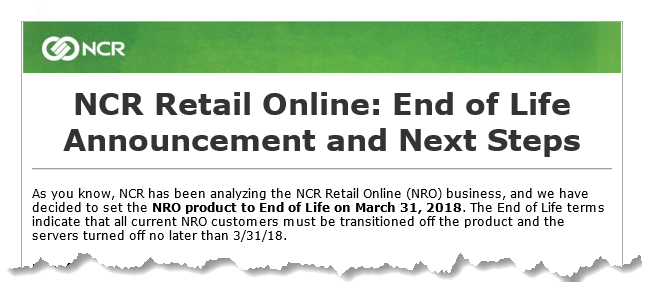
In 2012, the company launched NCR Retail Online, a platform designed as a store builder for “independent retailers and small chains.” Counterpoint was integrated with it to make it more functional. However, to the surprise of some, they set the platform to End of Life after only being in operation for six years. -
Material
Material was intended to fill “a gap in services for young, individual or small-scale entrepreneurs.” Kevin Sproles, the CEO of ecommerce company Volusion, declared this in 2015, while anticipating the company’s future. Volusion then spent much of 2017 trying to promote this new free program, including receiving coverage from Huffington Post.
The only problem was that customers did not bite. Despite making a test version available for free, Volusion found that consumer interest in the product was low. As a result, it suffered a failure to launch. -
PDG Commerce
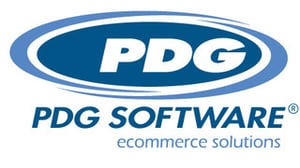 In 1997, a new Georgia tech company called PDG Software released a shopping cart software called PDG Commerce. In a 2010 interview, the company’s president, Karen Snyder, boasted that the program’s strength came from decades of feedback of their customers. Now, their URL leads to a vacant website.
In 1997, a new Georgia tech company called PDG Software released a shopping cart software called PDG Commerce. In a 2010 interview, the company’s president, Karen Snyder, boasted that the program’s strength came from decades of feedback of their customers. Now, their URL leads to a vacant website.
Unlike other examples listed here, PDG Commerce no longer exists because the company that created it seems to be gone as well. Ironically, angry comments from a number of forums indicate that they closed their doors, leaving their thousands of merchants without support in transitioning their pages to another platform. -
Squirrelcart
Lighthouse Development released this platform in 2002 and gave it this name for its MySQL-based nature. Jamie Whitney, owner of Squirrelcart, claimed in a 2009 interview that its main features were its highly customizable storefronts and its “powerful rule set feature.”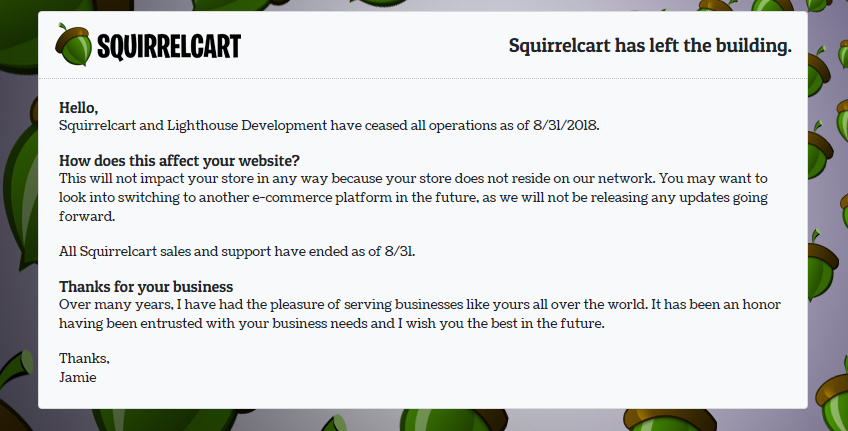
As of August 2018, all you can see on Squirrelcart.com is an announcement declaring that the domain name is for sale. After shutting down, the company was sold and as of December 2018 it shows active but under new ownership. -
Zoovy
Zoovy, Inc. was founded in 2000 and based in Carlsbad, California. Their eponymous platform was an eCommerce software solution that help merchants with product management, marketing development, and other operations.
Zoovy’s discontinuation came quietly: they have no news mentions anywhere online after around 2013, and their social media pages are either completely scrubbed or long dormant. Their website, Zoovy.com, does not even exist anymore — never a sign of a thriving internet company.
Former Zoovy, Inc. CEO Brian Horahk (who, on his LinkedIn profile, gave his title as “Rocket Surgeon”) has been keeping busy. He is now the CEO of Elastic.Ventures, which provides technological solutions to start-up companies. -
Goodsie
Jack Zerby, a former design director at Vimeo, co-founded this platform in 2011 as a simple and easy-to-use eCommerce solution. Their solution notably included options for accepting coupons and a statistics dashboard. Reviews noted that while their store designer gave users the ability to customize their storefront, they did not give access to the backend.
Goodsie was operating as recently as 2017, but they seem to be gone as of 2018. Unlike Flavors.me, another discontinued platform that Zerby co-founded, this company’s website bears no end-of-life announcement explaining what happened to the once-thriving platform. It is simply defunct.
-
Spark Pay
Spark Pay was an eCommerce solution that allowed businesses to sell products on both fully customized online stores and certain third-party sites. You could even manage multiple stores with the same dashboard. With that said, it did charge people for exceeding their inventory limits and similar reasons, which were not conducive to business growth.
Unlike some of the other discontinued platforms mentioned here, Spark Pay still exists in some form. It is now known as AmeriCommerce, which currently hosts more than 5000 websites. -
LemonStand
Launched in 2001 and headquartered in Vancouver, LemonStand was an eCommerce software company that enabled users to build and customize their own online stores. In 2016, they raised $1.25 million from investors to “invest in continued product development and to accelerate recruitment of new web designer and agency partners.”
It seems that this investment did not pan out in the end. In March 2019, LemonStand replaced its homepage with a message giving details about their imminent shutdown. Having already ceased billing for all their customers, they announced that they would discontinue all service in the beginning of June. They also provided a guide for their clients to make the transition to other providers. -
Tictail
Tictail was an online marketplace founded in 2012. The Sweden-based marketplace gained ground over time, claiming at one point that the platform’s sellers spanned as many as 140 countries. They even made the jump from online stores to brick-and-mortar with a Manhattan location.
In November 2018, the growing young company became subsumed into one far larger. Shopify announced that they would be acquiring Tictail, and they informed current users via email that the Tictail team would remain onboard.
Loss of Support for Older Versions of a Platform
As we mentioned earlier, companies that rely on technology need to stay up-to-date. Innovation never stops in this industry, and if a developer wants to be competitive, they must keep working on improving their products.
This is why years after the initial launch, certain companies have discontinued existing platforms under the premise of releasing a new-and-improved versions:
- In 2015, Magento, Inc. deployed Magento Version 2.0, commonly known as Magento 2 (with the previous version being referred to as Magento 1). And announced the official end of life date for Magento 1 as June 2020. Merchants stuck on Magento 1 are forced to migrate to a new platform before that date.
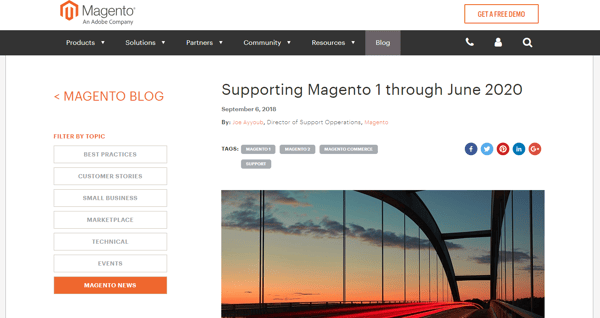
 More recently, in 2017, Volusion debuted Version 2.0 of their own platform. But Volusion v2 is not an update to the existing platform but a completely new solution. Long-term Volusion clients are not upgraded and will need to migrate to the new v2, which while easier to use for new merchants, seems to have lost many of the features that made Volusion a great platform since their beginning in 1999.
More recently, in 2017, Volusion debuted Version 2.0 of their own platform. But Volusion v2 is not an update to the existing platform but a completely new solution. Long-term Volusion clients are not upgraded and will need to migrate to the new v2, which while easier to use for new merchants, seems to have lost many of the features that made Volusion a great platform since their beginning in 1999.- A successful licensed solution, Interspire Shopping Cart, was replaced with Bigcommerce in 2009, and the official ISC end-of-life was announced on May 3, 2012. Where over 5,800 Interspire users had to find a new platform to run their businesses.
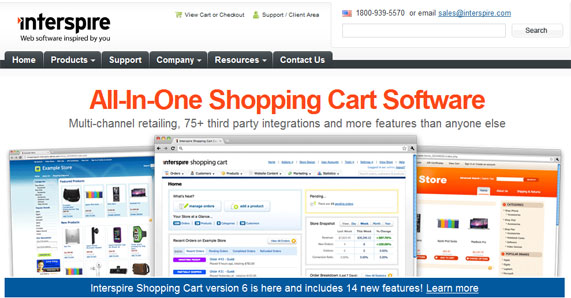
 Similarly, one update of most successful ecommerce platforms, MonsterCommerce, was acquired by Networksolutions in 2005. Which resulted in the company discontinuing Monstercommerce and introducing a basic ecommerce solution under the brand name of Networksolutions.
Similarly, one update of most successful ecommerce platforms, MonsterCommerce, was acquired by Networksolutions in 2005. Which resulted in the company discontinuing Monstercommerce and introducing a basic ecommerce solution under the brand name of Networksolutions.
These transformations should be a boon for merchants. They promise upgraded features, new tools, greater ease of use, and many other benefits. However, the aforementioned examples all caused more headaches than happiness by almost immediately dropping all support for the previous versions of the platforms.
Merchants need time to transfer data from one version to another, especially if they have a lot of it. Any delays and difficulties can result in the site being shut down for some time. Whenever customers cannot access an online store, the merchant misses out on revenue. They need the transition to be as smooth and quick as possible, and having support for their current version in addition to the new version facilitates their migration.
Finding the Right Platform for Your Business
Merchants need to be careful when trying to find the right platform for their store. While there may not be many guarantees, the possibility of suddenly losing support during version transformations is something to consider. Even if you choose only to look at the main eCommerce providers, there are still certain qualities about them that you need to keep in mind.
Shopify
The idea of a company listening to and trying to meet the demands of their customers seems like a given. However, business is not always so straightforward. Shopify is a public company, and that means that they have to answer to investors.
If they decide to prioritize the satisfaction of these investors at the expense of their customers, they may make decisions that benefit these few rather than the many. That could include dealing the same fate to Shopify’s ecommerce platform as eBay dealt to Magento Go and ProStores. You can see here for Shopify pricing.
BigCommerce
BigCommerce, on the other hand, is a private company and is one of Shopify's competitors. However, they have taken many rounds of funding, and the people who provide that funding may have a louder voice than others.
These voices can no longer be balanced out by the voices of the founders and the original CEO, Mitchell Harper, of BigCommerce, who are no longer part of the company. Without them, their vision may not be taken into account, which may leave ordinary customers vulnerable to changes that do not benefit them.
Magento 2
Magento 2 does not seem like a platform with an uncertain future. After all, it is still relatively new, having launched in 2016. Adobe, a large company, recently acquired the company behind this platform — implying that there must be some interest in its continuation.
However, that acquisition is precisely why the platform’s future is uncertain. After all, Adobe decided to terminate their own platform, Adobe Business Catalyst, earlier this year — for business reasons. Their plans for Magento 2 remain unclear.
3dcart
Meanwhile, 3dcart’s original founders still run the company, keeping the platform from growing stale or outdated while still maintaining the vision that sparked it. And with no investors dictating the direction, 3dcart can devote to serving the customers who make all this possible. Currently it is one of the best Shopify alternatives.
On top of all this, 3dcart follows a long-term strategy of continuing the development of the current platform. We know better that abruptly cancelling our solutions means pulling the rug out from our customers’ feet. That is why we strive to make our platform the best that it can be.
If you have ever used an eCommerce platform that was discontinued, or if you currently have any concerns about the platform you are using, feel free to leave a reply and share your story.





Leave a reply or comment below